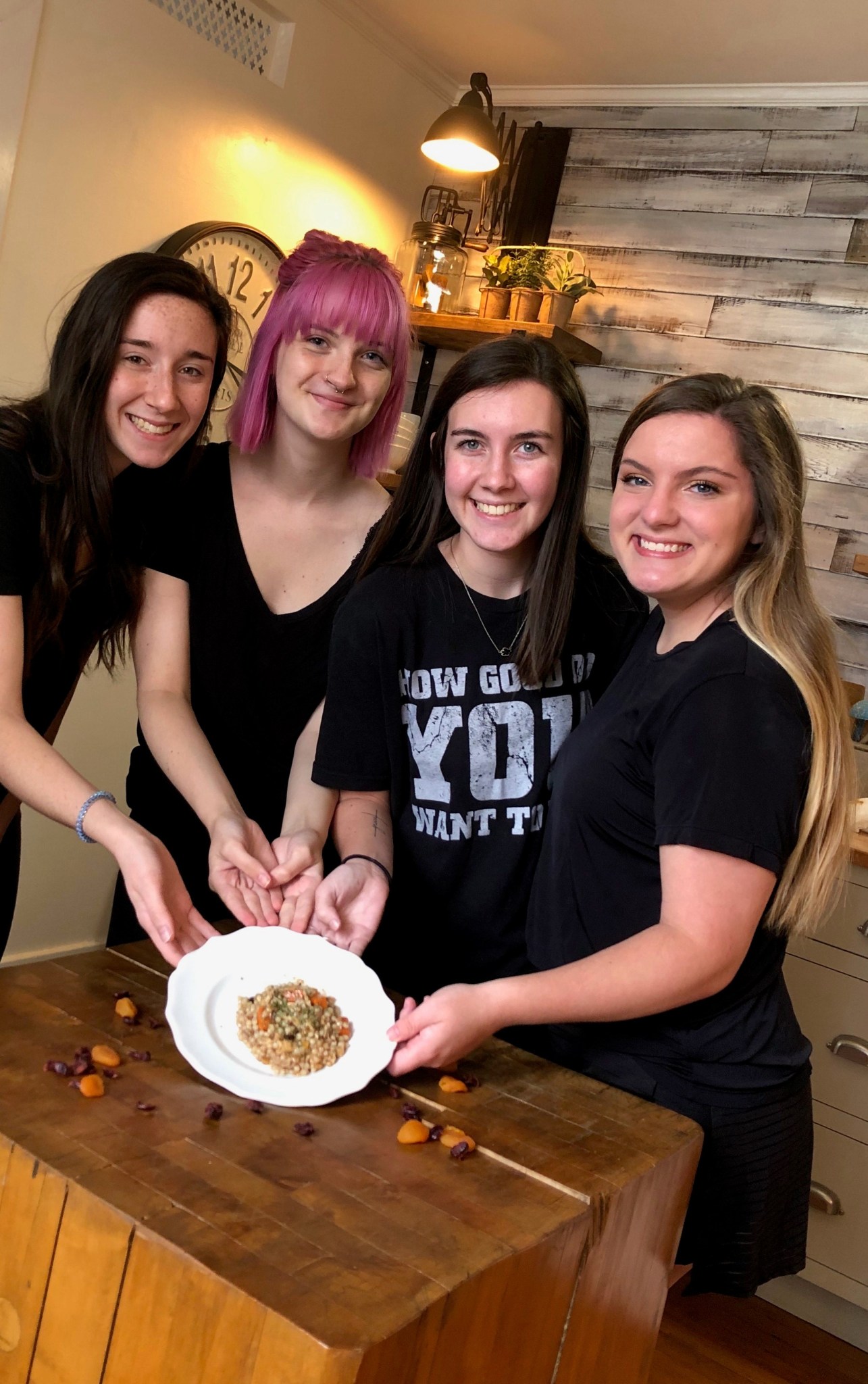It takes complicated math and amazing feats of technical engineering to get astronauts into space, but more than just rocket science goes into keeping the astronauts alive and healthy on the International Space Station. Maintaining a healthy diet of food that maintains its nutritious value in microgravity is also important, and it helps if the food tastes good too!
To add variety to their healthy diet, NASA’s HUNCH program, which stands for High school students United with NASA to Create Hardware, created a culinary competition five years ago to involve high school students in the creation of new recipes to feed the astronauts on the station. The program also shows students that a wide range of skills are needed for space travel. These skills not only include the standard engineering, science and math that make up STEM programs but also includes food science, space physiology and nutrition as part of these STEM areas. The culinary program has grown to be one of the most popular student initiatives that HUNCH offers.
“It started small,” said Bob Zeek, who co-founded HUNCH and is project resource manager at NASA’s Marshall Space Flight Center. “We had seven schools the first year.”
Now 54 schools competed in the culinary competition this year. The competition happens in two stages–a regional competition and a final cook-off that takes place at NASA’s Johnson Space Center (JSC) in Houston to be judged there by JSC Food Lab personnel, astronauts, and representatives from the space station program office. The students are judged on a final technical paper, a two-minute video, and their entrée—based on the sensory evaluation sheet that focuses on texture, taste, smell, and appearance. The recipe must meet the nutritional content the JSC food lab outlines and must process well for the microgravity environment of spaceflight. Schools compete within their regions, and the top 10 teams are chosen to make the trip to finals.
The final competition happened differently this year due to the spread of the coronavirus pandemic in the U.S. between regionals and finals, leaving the competitors to make several adjustments to their original plans. To follow CDC requirements, student finalists were not able to participate together, which forced them to adapt to new requirements, such as a greater emphasis put on their video and final paper.
A team from Hewitt-Trussville High School in Birmingham, Alabama – students Madeline Curd, Lucy Prince, Kailey Love, Abigail Mitchell, led by chef Anna Hallman – overcame these unique circumstances to win the competition. The theme for this year’s HUNCH competition was ethnic dishes, and their winning recipe was Moroccan chicken tagine.
“We thought Moroccan food would be a really good choice because a lot of people haven’t had Moroccan food,” said team member Kailey Love. “We had a good feeling from the beginning.”
The Hewitt-Trussville team competed in regionals that took place in February at the U.S. Space and Rocket Center in Huntsville, Alabama, to make it into the top 10 teams.
This year, HUNCH culinary program manager Allison Westover gained new partnerships with the American Culinary Federation and Sullivan University in Kentucky. Both partners are offering substantial scholarships and funds to the qualifying teams. Each of the students from the top 10 teams receive a $12,000 scholarship to Sullivan University. All the students on the winning team receive full-tuition, all academic fees paid scholarships to Sullivan University, and the culinary or science program at their high school also receives a $2,000 prize from the American Culinary Federation. Winning the competition can be an exciting outcome for the students involved, and the whole competition benefits NASA as well.
Feeding the NASA astronauts can be a big task, and strict nutritional guidelines must be followed. These are two of the many reasons the HUNCH program is so important.
“We appreciate what they do because we actually get a tangible product,” said Zeek. Astronauts on the Station have enjoyed past winning dishes such as orange-blueberry croissant casserole and a harvest hash.
The JSC Food Lab processes the winning dish and sends it to the station for astronauts there to enjoy. That outcome was team member Lucy Prince’s favorite part of the competition, “It was a cool experience overall, to know that the food we made is for NASA and could end up going to space.”
HUNCH’s goal is to empower and inspire students through a project-based learning program and by providing opportunities to students to play an active role in the space program. It started in 2003 with two schools in Alabama and one in Houston. Now, 277 schools in 44 states participate in six focus areas — design and prototyping, software, hardware, sewn flight articles, video and media, and culinary arts. The program has produced more than 600 items for flight or training for the space station program — representing approximately 20,000 individual flight parts — with nearly 500 parts flown to the space station or delivered for flight. More information is available on the NASA HUNCH website and NASA HUNCH Culinary Challenge website.



























